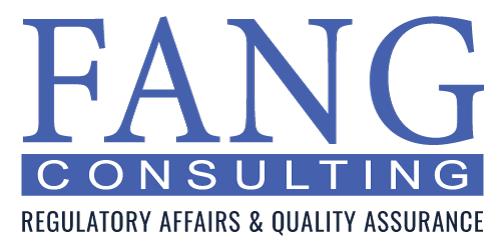
By Leslie Williams | April 20, 2021
If the COVID-era emergency use authorization process has taught us anything, it’s that the standard, non-emergent regulatory approval process for vaccines and other biologics – while undeniably lengthy and expensive – does have its benefits. New vaccines are trialed on a much larger scale across a much broader cross-section of the population so that more potential side effects and/or contraindications are identified beforehand. And while the COVID vaccine technologies may have been on pharma radar for years, the vaccines themselves were developed in near-record time, raising some questions about the data collected and the validity of the authorization process itself.
The FDA has been beleaguered by questions about its emergency use authorization process throughout the pandemic, and the potential implications of an urgent and abbreviated regulatory review have recently become more apparent. While three of the most common COVID vaccines in the US were developed at warp speed and with seemingly shortened clinical trials, the Johnson & Johnson vaccine has been placed on hold pending closer scrutiny from the FDA due to the occurrence of blood clots in some patients, with the Astra Zeneca vaccine producing similar results outside the US. The occurrence of these blood clots is exceptionally low – statistically insignificant, but certainly not medically – and classify as an adverse event that would typically be identified during full-scale clinical trials.
Because of its inherent risks, the vaccine development business is not for the faint of heart. But just how different is the EUA process for vaccines from the standard, years-long development, approval and launch process? The answer might surprise you.
Slow and Steady Wins the Race
The availability of a COVID vaccine in under eleven months raised more than a few eyebrows within the pharma and life science industries. Even under the auspices of Operation Warp Speed, the launch of a vaccine for use on the global population in so little time was an astounding accomplishment. And those who believe that medical devices and pharmaceuticals are grossly over-regulated will argue that there is no good reason for a long and drawn-out approval process, those pesky FDA requirements have resulted in a wide selection of safe and effective vaccines against a variety of diseases.
Pharmaceutical companies know full well the amount of time it takes to bring a vaccine to market. Vaccines are submitted to the FDA’s Center for Biologics and Evaluation Research (CBER), and the entire process – from discovery to clinical trials to FDA approval and launch – can take upwards of 15 years per vaccine. This type of product lifecycle requires a long-term strategy and a sizable, up-front investment that offers no guarantee the vaccine will ever make it to market. The FDA has some of the most stringent regulatory requirements for vaccines in the world, which has been good for public health but bad for pharma CEOs trying to please investors.
Despite what so-called “experts” may claim on social media, vaccine development is a complicated and time-consuming science. Here’s a breakdown of the steps involved in bringing a new vaccine to market:
- Research and Discovery (2-6 years) – researchers develop a concept for a vaccine, and conduct laboratory tests on their vaccine candidate to validate the practical application of the candidate vaccine
- Pre-Clinical Development (2-5 years) – testing continues to demonstrate whether the candidate vaccine will work in humans, and that it will be safe. At the end of this phase, researchers submit an Investigational New Drug (IND) application to the FDA.
- Clinical Development (several years) – FDA evaluates the IND, analyzing the preclinical data and ensuring documentation of good laboratory practices. FDA also assesses the product quality and the technology needed to manufacture it to determine if the candidate vaccine is safe for testing in humans. Once this assessment is complete, clinical trials begin:
- Phase I involves up to 100 healthy individuals and focuses on vaccine safety, impact of increases in dosage, and how the vaccine stimulates the immune response
- Phase II is the randomized control trial, employing hundreds of people with varying states of health and from different demographic groups. This phase allows collection of information on short-term side effects, the connection between dosage and immune response, and overall effectiveness of the candidate vaccine in boosting immunity. This phase may include a placebo group as well as those receiving the true vaccine.
- Phase III is an expansion of Phase II, with thousands of people receiving either the vaccine or the placebo. This phase generates critical information on the vaccine effectiveness and compares the immune response to the disease of those who received the vaccine against those in the placebo group.
At the end of Phase III, and once the pharma company has proven that they can manufacture the vaccine safely and consistently, the company submits their Biologics License Application (BLA) to the FDA. Similar to a medical device 510(k) submission, the BLA is a request for permission to market and distribute the vaccine in the US. Once the BLA is approved, the vaccine is officially launched for clinical use.
However, even after lengthy clinical trials and the accumulation of mountains of data, pharma companies must demonstrate ongoing post-market surveillance studies, often referred to as Phase IV of development. The FDA also keeps a weather eye on the potential for variation in manufacture of the vaccine and will not allow release of a new lot of vaccine until adequate lot-to-lot studies have been completed.
Vaccines at Warp Speed?
The FDA website clearly states that any vaccine granted emergency use authorization during a public health crisis is subject to the same rigorous requirements as any other non-EUA vaccine, and the information available publicly seems to support those claims.
A news release from the National Institutes of Health in March 2021 indicated that the Astra Zeneca trial included over 32,000 participants across 88 sites in the United States, Chile and Peru. The FDA review memo for the Pfizer vaccine states that over 38,000 people were studied prior to submission of the EUA application, and the FDA evaluation of the J&J vaccine shows that 70,000 adults participated in their Phase III study. While these numbers maybe somewhat lower than seen in non-EUA trials, they represent a healthy cross-section of the population and a robust clinical trial protocol. Both populations were closely monitored for symptoms of COVID illness and other adverse events for several weeks post-vaccination, and both the Pfizer and J&J trials produced adverse events in some patients.
The Johnson & Johnson study produced serious adverse effects (SAEs) in fifteen participants who received the vaccine (deep vein thrombosis, pulmonary embolism, and four other clinically significant events) with a total of eight deaths as of February 2021. The placebo group demonstrated ten similar SAEs and twenty deaths; the deaths were determined to be from causes unrelated to the vaccine. Because of the presence of other risk factors in participants experiencing SAEs post-vaccination, investigators could not determine a causal relationship between the two, and the FDA recommended careful surveillance of SAEs within the broader population once deployed – which is exactly what we have seen happen in recent weeks.
Similarly, there were six deaths recorded between April and November 2020 noted in a Pfizer study (2 in the vaccine group, 4 in the placebo). Oddly enough, the most common SAE reported by study participants was appendicitis (12 participants), each of which was determined to be unrelated to the vaccine by investigators and the FDA. Perhaps the most surprising outcome of the Pfizer study was the 3,410 cases of suspected but unconfirmed COVID-19 that were deemed the likely result of vaccine reactogenicity and not actual infection with the SARS-CoV-2 virus.
The data indicates that the adverse effects reported for both vaccines – both officially and anecdotally – were noted during the clinical trials, reviewed by investigators, and determined to be unrelated to the vaccines themselves. And it does appear that the occurrence of thrombosis seen in the broader population is statistically in line with what was presented to the FDA with the Johnson & Johnson EUA submission data, so the halt in J&J vaccine distribution may be unfounded, given the documented co-morbidities in the affected study participants.
Even if the EUA standards are as rigorous as the FDA maintains, it’s difficult to align the rapidity of the development and authorization of four separate COVID vaccines with the years of clinical trials that are industry best practice. But both the EUA and traditional vaccine pathways require post-BLA data gathering and safety monitoring of the vaccine, which will continue long after the pandemic ends, and it is this real-world data that will serve as the de facto clinical trial for each vaccine. Only time will tell if the abbreviated EUA regulatory pathway is really as comprehensive as the current best practice, and if there is indeed room to reduce the time and expense involved without compromising product safety.




